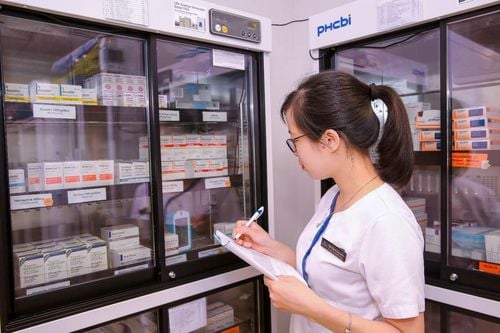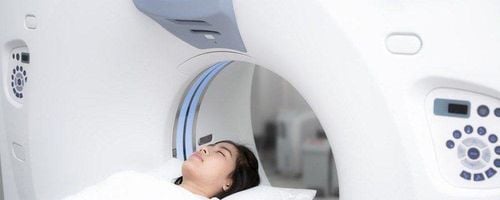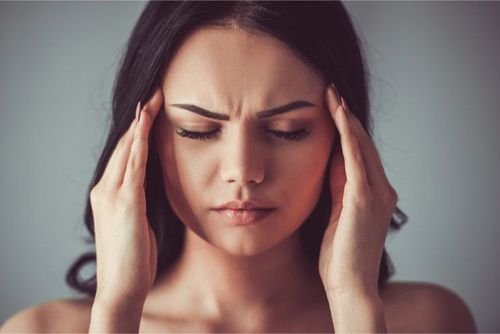This is an automatically translated article.
The article was professionally consulted by BSCK II Pham Thi Son - Neurologist - Department of Medical Examination & Internal Medicine, Vinmec Hai Phong General Hospital.Headache is the most common neurological symptom in general neurology practice. Headache syndrome can be a disease, it can also be a symptom of different medical and surgical diseases. Each type of headache cause will have its own treatment. The following article will help customers understand more about this syndrome.
1. Classification of headaches
2004 International Headache Society (HIS) classification of headaches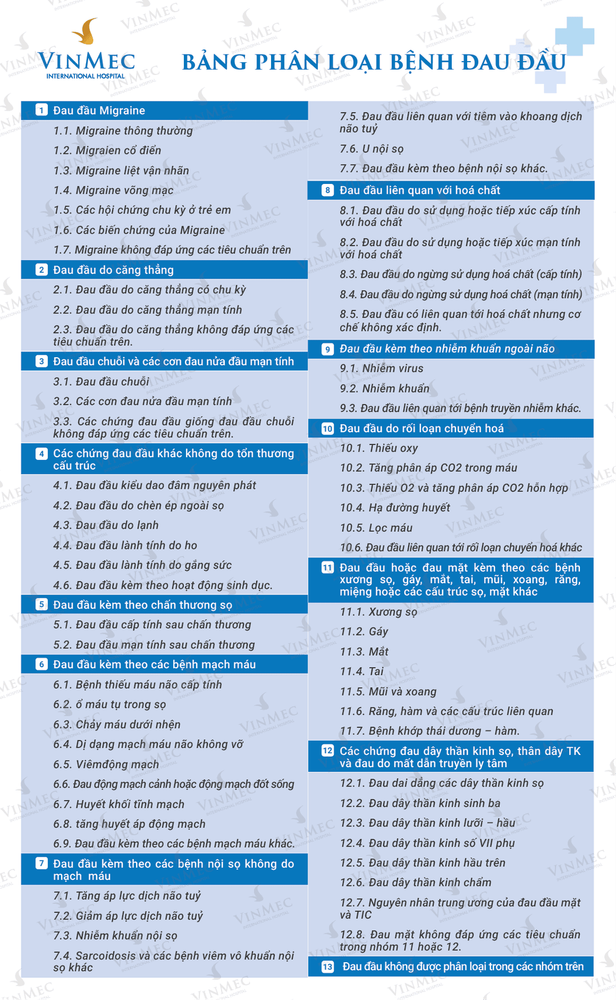
2. Mechanism of headache
All sensory structures of the intracranial or extracranial nervous system can produce pain when stimulated. Causes of irritation can be inflammatory processes, tumor invasion, ischemia, pathological processes causing torsion, stretch, or edema around the blood vessels.
The pain-generating mechanism of the above-mentioned physical injuries is usually through two ways:
Physical injury mechanically stimulates pain receptors (such as stretching or twisting blood vessels as well as tissues). other pain receptors). Injury produces chemical mediators (substance P, serotonin, kinins, prostaglandins), which act on pain receptors and cause clinical pain.
3. Laboratory tests to diagnose the cause of headache
There are many complementary diagnostic methods applied to the medical examination of headache patients. However, depending on each specific case, depending on the pathological characteristics of the pathological processes, the physician needs to choose the appropriate method.3.1. Computed tomography (CT) of the brain has the advantages of fast scanning time, identifying the mass of shock, infarct, bleeding, hydrocephalus... Disadvantages: Difficult to diagnose posterior fossa pathology Subject: Patients with headache chain, tension headache, functional headache for normal picture. 3.2. Cranial magnetic resonance imaging
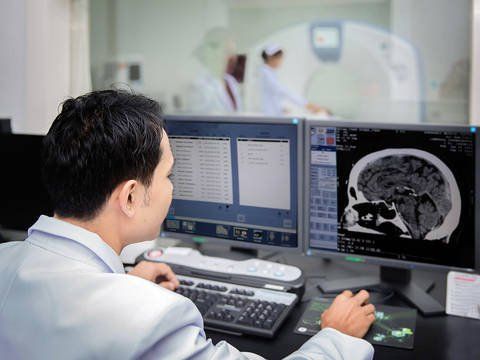
Chụp công hưởng từ sọ não phát hiện nguyên nhân đau đầu dễ dàng hơn
This is the most modern method for clear images of brain lesions, which can be visualized in the brain in many different dimensions. Advantages: Has the advantage of diagnosing posterior fossa pathology, diagnosing software pathology (brain, marrow, cervical soft tissue). Cons: Long shooting time, one shot takes about 30 minutes. 3.3. Cerebral magnetic resonance angiography Used to evaluate blood vessels inside and outside the skull, diagnose cerebral vascular malformations, atherosclerosis, arterial occlusion, and diagnose cranial venous sinus thrombosis. 3.4. DSA background digitized angiography is often indicated for the diagnosis and intervention of diseases of the intracranial and extracranial vessels. 3.5. EEG records the functional activities of the brain. EEG is especially valuable in the diagnosis and monitoring of epilepsy. In which, video EEG is a method of monitoring brain activity, the result obtained is a video recording the activity of brain electrical waves for a long time to identify abnormalities in the functional activity of the nervous system. , thereby accurately diagnosing epilepsy, and at the same time helping to identify the type of epilepsy and abnormal brain areas 3.6. Carotid ultrasound is the first choice for the classification, diagnosis, and examination of carotid atherosclerosis. Carotid atherosclerosis is one of the causes of reduced blood flow to the brain and a potential risk of cerebral embolism. 3.7. Transcranial ultrasound Valuable for monitoring cerebral vasospasm, especially in the case of subarachnoid hemorrhage, diagnosis of cerebral stenosis or occlusion, intraoperative monitoring, monitoring and evaluation of brain death...in which One of the important applications is the detection of cerebral arteriovenous malformations. 3.8. Cerebrospinal fluid test Valuable to diagnose the cause In cases of headache accompanied by fever to find the cause of the disease. In addition, the patient may have to do other blood and paraclinical tests to find the causes of the disease not in the brain: such as total analysis of blood cells, urine, liver function, kidney function, blood sugar and fat. blood, electrocardiogram, echocardiogram...
4. Treatment and prevention of headaches

Tập thể dục hàng ngày giảm hội chứng đau đầu
Daily physical exercise such as swimming, walking, yoga.. Stress and conflict in work and life should be avoided. Always live optimistically and happily and share difficult problems with relatives and friends. Limit drinking alcohol, smoking, stimulants, avoid staying up late and eat enough nutrients. When there are any symptoms of a headache, you need to go to a reputable health department for appropriate examination and treatment, do not self-medicate. The right treatment, the right medicine will ensure safety and reduce unnecessary costs for the patient. Vinmec Hai Phong Hospital is one of the medical facilities that will help you find the cause and give you the best treatment plan.
Vinmec Hai Phong International General Hospital is one of the reliable options for treating neurological diseases in general and headaches in particular:
The hospital has a team of specialized doctors, many years of experience with support. support of the whole Vinmec system to meet JCI international standards. The hospital has modern equipment and machinery such as: Being the first hospital in Hai Phong to own a Signa Pioneer 3.0 Tesla Magnetic Resonator from GE (USA) and Aquilion One CT scanner (Vision Edition) 640 slices of Toshiba company (Japan), the means of early and accurate diagnosis of vascular and neurological lesions. Currently, only Vinmec hospital in Hai Phong has a video EEG machine, which is of high value in accurately diagnosing epilepsy. In addition, other testing systems of the hospital are modern and ensure the correct process. Doctor: Doctor CKII Pham Thi Son has 20 years of experience in the field of neurology. In particular, the doctor has a lot of experience in diagnosing and treating headaches. If you want to visit and treat headaches at Vinmec Hai Phong International General Hospital, you can contact us at HOTLINE: (+ 84 22) 57309 888 or book an appointment HERE






